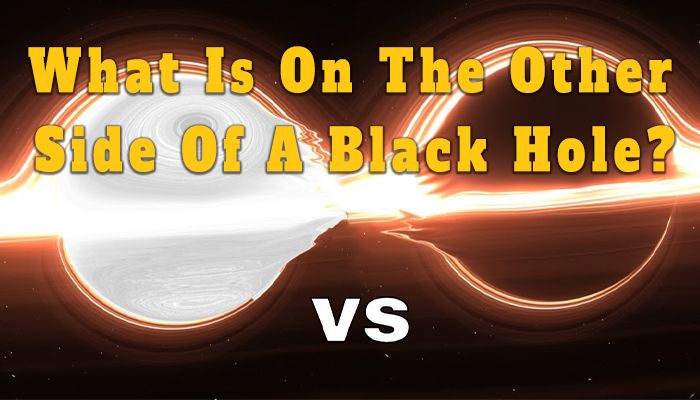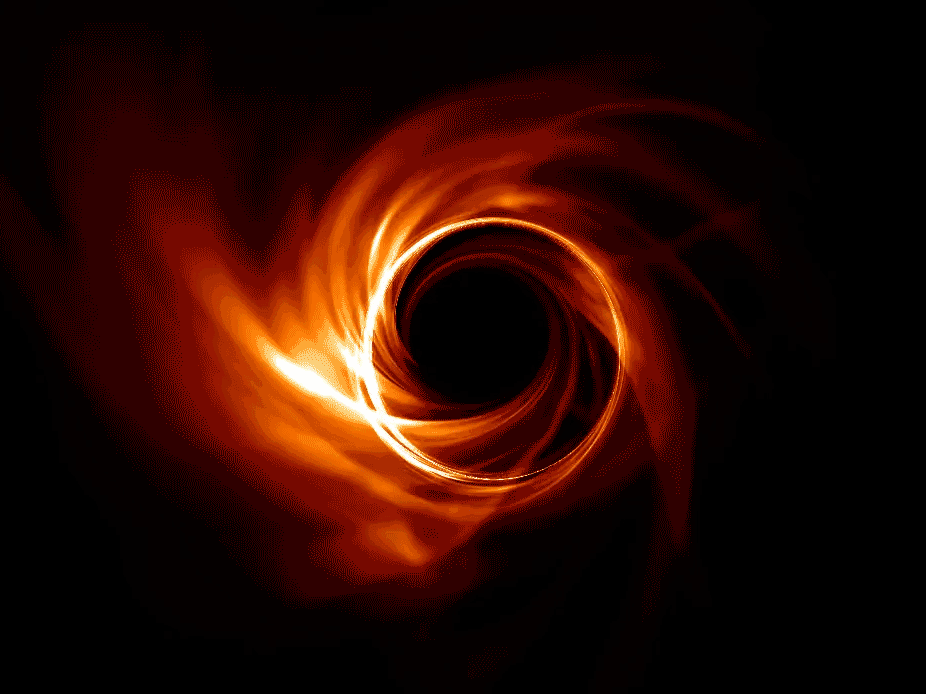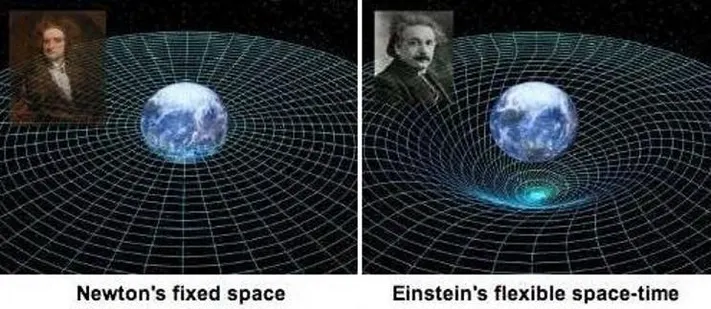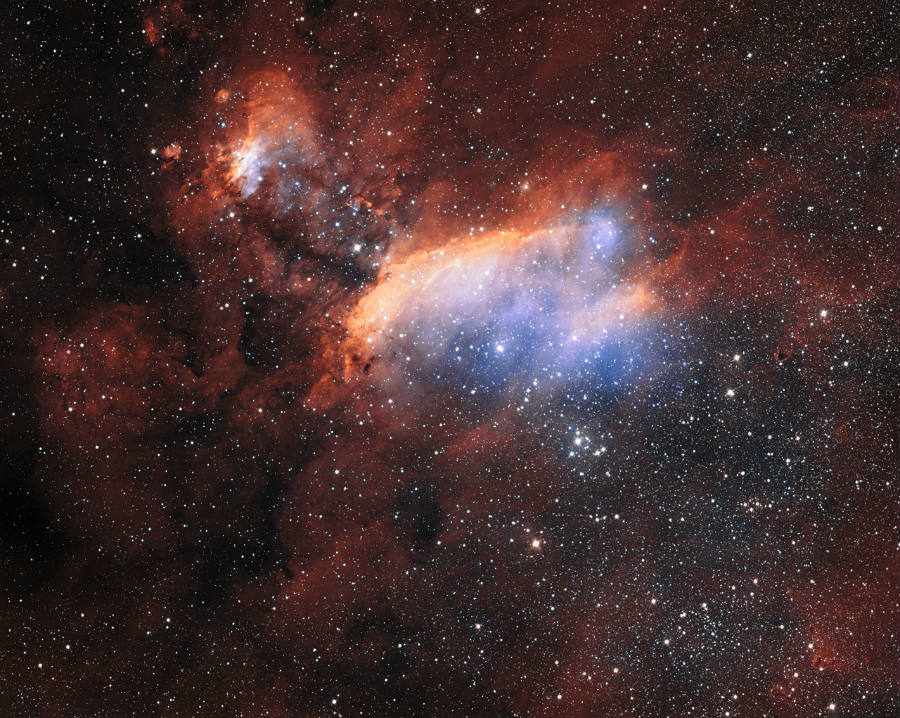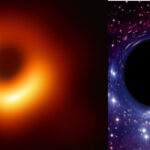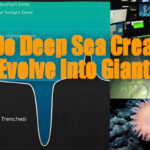One of astronomy’s great, enduring mysteries is what really happens on the inside of a black hole. We know that anything which gets too close to a black hole is destroyed, but if you were able to jump right inside of one, then what would happen and where would you go? Today, we will explore a few of the many exotic and fascinating possibilities for what lies on the other side of a black hole. Let’s see What Is On The Other Side Of A Black Hole…
One of astronomy’s great, enduring mysteries is what really happens on the inside of a black hole. We know that anything which gets too close to a black hole is ripped up and destroyed, thanks to its immense tidal gravitational forces. But if you were able to jump right inside of one, towards its very heart, then what would happen, and where would you end up? It is this spooky scientific question that has plagued scientists for more than 100 years, and thus it is going to be our topic today.
Black holes are the most fascinating and mysterious objects in the universe. They are pockets of space which exist outside of the laws of nature and are places where time and space as we know it ceases to exist. What really happens on the inside of one of these universal boundaries remains a mystery… but among the possible explanations, there is always an inescapable one, which can neither be proven nor ruled out…
The idea is that black holes are gateways, to other parts of space, or maybe even to new universes entirely. Today, we will aim to establish what truly lies on the other side of a black hole.
Bending Spacetime
To understand how a black hole could act as a gateway, you first have to understand the very nature of space and time. To date, nobody has understood this as well as Albert Einstein.
According to his world-renowned and time-tested Theory of General Relativity, time and space are fundamentally linked, like two sides of a cosmic coin- combining to create a malleable cosmic fabric which lines the entire universe, known simply as spacetime. And we liken it to “fabric” because it is warped by the matter upon it. The plane of spacetime is curved by the presence of mass. Mass is a form of condensed energy, and where there is condensed energy, spacetime will fold around it, and the resulting effect is felt as gravity.
The heavier and more concentrated the mass, the more the spacetime surrounding it will warp. And as such, if we compress enough mass within a sufficiently minuscule volume, then spacetime will deform so much that an abyssal, never-ending sinkhole will be created in the fabric. Within this area of warped spacetime, the gravitational influence is so great that spacetime itself starts flowing into the anomaly, carrying everything with it, including light.
This results in a dark sphere around the area where light is being dragged into the gravitational well, known as an event horizon and thus, we have a Black Hole. At the centre of every black hole lies a spacetime singularity; a point so deformed by mass compression that it punches through the fabric of spacetime to become a physical boundary of the universe; a place where all light and matter meet their eternal end.
In addition, a black hole also has a curvature singularity, which is the part where the curvature of deformed spacetime begins to take on infinite values. It is here where science begins to depart from General Relativity and all our other models. If we were somehow able to survive up until this point.
Inside a Black Hole
Then we would experience something very strange- space and time, as connected entities, would switch roles, as the black hole’s interior becomes infinite.
The singularity is suddenly no longer a physical point, but rather an inevitable event in the future. Space is so warped that all paths will inevitably lead us to this singularity, but time is so warped that we would require an ever-increasing amount of it to get there, as time on the outside slows down and eventually stops, forever. And so, at this point, our cosmic fate would be sealed.
We would be frozen in that moment of time forever more. The singularity now represents the infinite future of a featureless, timeless dimension, from which nothing will ever be able to escape. You would never reach the bottom of this sinkhole… you would just continue cruising deeper into your eternal cosmic chamber unless you were to hit another part of spacetime.
Wormholes & Einstein-Rosen Bridges
We don’t know what the implications of curving spacetime to infinity really are… so perhaps it is possible to curve spacetime “all the way round”, so to speak, so that a blackhole may end up leading to a completely different part of space. You would then have a link between the two disparate regions which pinches them together, ignoring the cosmic distance between the two.
Akin to folding a piece of paper to connect two dots, as opposed to drawing a line between them. You would have an Einstein-Rosen Bridge, better known as a Wormhole. A means for a black hole to subvert the spacetime continuum by acting as a portal.
Wormholes are a fascinating prospect, and perhaps not just one of science fiction. While they’ve never been observed in practice, they are consistent with General Relativity, and some scientists believe that they may be possible- if not through black holes, then through cosmic strings from the earliest nanoseconds of time.
But don’t get too excited, because even if wormholes are possible, they almost certainly wouldn’t be practical. Even if a wormhole bridge could form inside a black hole, it would be incredibly unstable. The immense gravity on the black hole’s interior would constantly stretch and contract the spacetime bridge, before severing the connection into two regular black holes, perhaps only seconds after it forms.
Furthermore, even if a wormhole could remain connected for longer, it still wouldn’t be a practical means for universal travel, as all the points made about time stopping inside a black hole still stand. You would never be able to reach whatever lies on the other side of a wormhole, you would simply get stuck somewhere in the middle and age to death in the process.
But just because a wormhole isn’t suitable for traversing, doesn’t mean that two parts of cannot be pinched together, for however long. It is not known what kind of black hole, if any, could create such a bridge. Perhaps not your run-of-the-mill collapsed star- as if that were sending its relatively limited mass into another part of space, it probably wouldn’t survive for very long.
But maybe Supermassive Black Holes, which lie at the hearts of large galaxies and can be billions of times heavier than the sun, could become so massive that they are somehow able to “burst” through into another part of space.
We have no idea what such a bursting black hole would look White Holes like at the other end. But in any case, we call it a white hole. As the name suggests, a white hole is the opposite of a black hole in its most fundamental respects.
If wormholes in spacetime really do exist, then for all that goes in via a black hole, there must be another “hole” somewhere space through which all comes out, even if it only exists momentarily- this would be a white hole. Where black holes consume, white holes would eject. Where black holes “gulp”, white holes would “burp”. The event horizon of a white hole is not a point of no return, but rather a barrier of no-admission; matter can only flow outwards away from the singularity before being ejected into space.
However, this does not mean that a white hole would indicatively repel all the objects surrounding it. Presuming one was able to survive for longer than a matter of seconds, then like a black hole, a white hole would probably have properties such as spin, charge, and most importantly of all, mass.
A mass capable of attracting other objects from a certain distance with its gravity. It is only when these objects approach the white hole’s event horizon that they are unable to proceed any further.
And far from being an unmistakeably bright and bedazzling beacon, a white hole may actually look very similar to a black hole from far enough away- surrounded by an accretion disc, a network of satellites, and radiation. The one key difference is that a white hole would be expected to “burp” consumed matter and energy from its twin, instead of consuming it. However, this burping event would be tricky to spot, as it would not last for very long.
If a white hole ejected too much matter too consistently, then before long its system would undergo a gravitational collapse, forming a black hole in place of the white hole. And so instead, it is more likely that a white hole’s ejections would be highly infrequent and very brief. So, just to recap, we’re talking for something that looks like a black hole, which may only exist for a couple of seconds, distinguished only by the fact that it “burps”…
But we’ve no idea what that “burp” would look like. It’s not a very useful profile to say the least. Needless to say, we’ve never identified any compelling white-hole candidate in space. The billion-dollar question is, is that because they don’t exist, or is it because they are exceedingly brief and rare, and thus we simply haven’t managed to see one yet?
Schwarzschild Metric & the Eternal Black Hole
It’s undeniable that white holes are very much a product of the mathematics of black holes. While a wealth of observations in recent decades have all but proven the existence of black holes, white holes have remained nothing more than a mere mathematical curiosity since they were first predicted in 1964.
A few months after Einstein presented his Theory of General Relativity, in which he first predicted the black hole, a German scientist named Karl Schwarzschild solved the field equations for their first exact solution; giving us the Schwarzschild Metric. The Schwarzschild Metric describes the most simplified black hole which can exist; a single unit of compressed mass within a completely empty plane of spacetime, which is therefore unaffected by its surroundings.
One which was never born and one that will never die, never growing or shrinking- an Eternal BlackHole. It was from this earliest of case studies for General Relativity that the white hole was extrapolated, almost half a century later. In addition to admitting positive square root value solutions, the Schwarzschild Metric also admits negative square root solutions.
In simple terms, we can extend the Eternal Black Hole model to account for a new dimension where we find the white hole. To make this easier to understand, we can use a diagram.
Penrose Diagram
Here is our universe, with us at the centre- you have the infinite past and future running along the y-axis, and distance running along the x-axis, marked by the cosmic horizon.
Spacetime is represented by curling lines which flow across the diagram, and light travels diagonally. Now, if we add in the eternal black hole- one of the cosmic horizons becomes the black hole’s event horizon- the point of no return and a boundary of the universe.
Anything within this event horizon will need to travel for an infinite amount of time to escape, i.e., it will never happen. If we go beneath this horizon, we extend the diagram into the black hole’s interior. This is the area we spoke about where space and time switch roles; the place where time stops and the singularity becomes the infinite future. The thing is, however, that this black hole is eternal- and so as well as accounting for the infinite future, we must account for the infinite past. And we can extend our diagram on the past side.
What we get is a time-reversed black hole- as in, a black hole viewed backwards in time, and thus, it ejects its matter and energy. The singularity is now an event in the infinite past which can never be reached- trying to get there would be like trying to travel backwards in time. And so instead, light and matter can only flow outwards, away from the singularity and into the universe.
And thus, we have our white hole- which works inversely to the black hole, by ejecting matter into space. And connecting the horizons is our Einstein-Rosen Bridge, which may lead us to another part of space, another point in time, or perhaps to a new dimension entirely.
The Case Against White Holes
With all things considered, it’s not a very convincing case for a white hole’s existence. Though the white hole makes for a pretty aesthetically-pleasing diagram, in reality, it doesn’t take into account a myriad of other factors.
The whole concept of a “white hole” is just the Eternal Black Hole viewed backward in time, at no point is it implied that a so-called“white hole” is a required counterpart of a black one.
Furthermore, the Eternal BlackHole itself doesn’t exist in practice. Black holes are not eternal- they are born at Caserta in intervals of time, and they eventually evaporate and die due to a phenomenon known as Hawking Radiation.
Moreover, a black hole’s “time-reversal” is, in reality, the object that formed it- a collapsing star, a contracting gas cloud or a pair of rotating neutron stars; not a time-reversed black hole.
Another thing is that, while wormholes and white holes are compatible with General Relativity, it must be remembered that General Relativity is time-symmetric. It doesn’t know which way time flows in our universe, and it also doesn’t know about the other laws of physics- namely, the 2nd law of Thermodynamics.
There is no known physical mechanism that can create the sophisticated, highly ordered energy of a white hole from the emptiness of space. All of this, coupled with the fact that we have never observed or detected any compelling evidence for a white hole, makes the whole thing seem more in the domain of science fiction rather than science fact. Wormholes may still be possible, existing either in the blink of an eye or in an undetectable microscopic form, if StringTheory is anything to go by.
But when it comes to white holes bursting through into other parts of space, the bottom line is that science doesn’t support it, and the evidence is just not there. It could be argued that we aren’t advanced enough to effectively search for signs of wormholes, but generally, all of this seems to lead a disappointing conclusion, that wormholes and white holes are simply figments of our theoretical imagination.
It’santi-climactic, I know, but it’s worth noting that this only rules out wormholes as gateways to other areas of this universe. What it doesn’t rule out is that inescapable idea that we are always drawn back to when talking about black holes- that they lead not to our universe, but to new universes entirely.
White Holes as New Universes
While we’ve never seen any evidence for a white hole in space, there is one thing that mimics the behavior of one- and that “thing” is the Big Bang. The Big Bang was an event during which the universe’s energy was released in a single pulse, which resembled a singularity, and that energy has been flowing outwards and away ever since.
Even today, galaxies and matter are being separated gradually by a mysterious force that drives the universe’s expansion- similar to the way in which a white hole would be expected to push matter away from its event horizon.
As we mentioned, a white hole’s event horizon is essentially a time barrier- trying to breach it is like trying to return to a time in the past. And in this case, the Big Bang is our time-barrier. The “event horizon” of the Big Bang is the moment at which the universe came into being, around 13.8BN years ago. And nothing in this universe can ever breach or exceed that moment at TimeZero- that time just doesn’t exist within the bounds of our reality.
The marked similarities between the Big Bang and the behavior of a white hole are curious- after all we know barely anything about why the universe exists and what gave rise to it. If black holes are somehow connected to the Big Bang, then perhaps what we perceive as a so-called “white hole ”is actually the creation of a new universe. This idea gives us the perspective we need to complete our cosmic diagram.
Once we’ve added in our past and future black hole extensions, the Einstein-Rosen Bridge does not lead us back into another place within our universe like a wormhole would. Instead, if we follow the negative square root solution of the Schwarzschild Metric beyond the black hole’s interior, it leads to its own universe- a parallel universe where time runs backwards, thus giving us our maximally-extended Schwarzschild Solution.
And so, one school of thought is, rather than being portals across space, perhaps blackholes are in fact the birthplace of new universes. Perhaps our universe was born inside one, and the resulting white hole was the Big Bang.
Black Hole Cosmology
By considering such ideas, you begin to stumble into the curious paradigm of Black Hole Cosmology- which holds as its key assertion that universes begin inside black holes. Universes which themselves give rise to black holes and thus new universes, in a never-ending cycle of creation. Last time out, we spoke about Cyclic Cosmology, which proposes that the universe exists in an infinite oscillating cycle of Big Bangs and remote futures.
Black Hole Cosmology, on the other hand, favors a different approach-one where our universe is not alone and is part of a family tree of related universes, connected by wormhole branches, and driven by reproduction through natural selection. Universes with laws of physics like ours, which allow for spacetime singularities, are likely to be favored by being the best adapted to produce black holes which can birth more universes.
So, perhaps our universe is typical among the bunch, but we can never know where the hierarchy started or will end. The Paradigm proposes that, when matter falls into a black hole, rather than leading to another part of space, that matter falls towards the blackhole’s singularity, gradually becoming being compressed further and further until it reaches an extraordinary but finite density; at which point it “bounces” back outwards.
The resulting “bounce” is a new Big Bang, which creates a new expanding universe filled with ultra-compressed energy on the other side. As we mentioned, beneath the event horizon, the curvature of spacetime is so that space and time become infinite, and so this new universe now has an unending amount of time and space in which to grow, evolve, birth new black holes and carry on the chain. With each universe’s time running completely independently to that of its siblings.
This model of cosmology, if it is the so-to-speak“right answer”, would shed light on a number of key scientific and philosophical questions about the nature of the universe- including what lies beyond it and what it is expanding into- in this case, the interior of a black hole from an older parent universe. It would also help explain why our universe’s origin state, a single point of infinite density, bares so much resemblance to the singularity of a black hole.
Perhaps black holes, as un-survivable as they may be from the outside, provide the perfect, eternal cradles for new universes like our own. And so, even if wormholes in spacetime don’t exist, the possibility of something forming on the other side of a black hole remains a plausible one. And even if white holes are nothing more than a mathematical artifact, they may still give us clues to the origin of our being.
Hawking Radiation & the Final Phase
When it comes to our existence in the wider context, we really have no idea what to believe. Any one of our crazy, arbitrary theories could hold the key to understanding this reality we’ve been thrown into. Maybe Black Hole Cosmology has the answer, or maybe it couldn’t be further from the truth. Maybe black holes don’t lead anywhere, and simply doom everything within to an endless imprisonment in cosmic purgatory.
Sadly, we will probably never know the truth- the very fact that black holes exist outside the boundaries of our space and time render their true nature forever illusive and unattainable. But even if blackholes don’t create new universes, or don’t lead anywhere exciting… there is still one more possibility for white holes that we’ve yet to consider- one which doesn’t need a wormhole or a new universe, but instead requires… time.
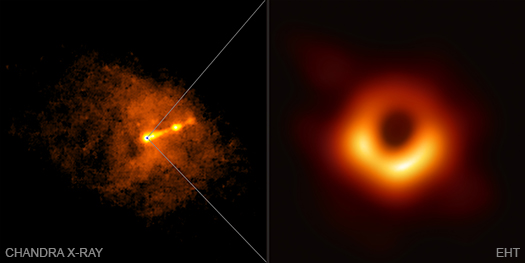
One idea is that, instead of being its own entropy-defying phenomenon, a “white hole” may actually be a black hole in the final stage of its life. Courtesy of Stephen Hawking and his peers, we now believe that black holes leak their mass and die, over incredibly long timescales.

This is due to relativistic quantum fluctuations- instability at the lowest level of nature- tiny pairs of virtual particles and anti-particles are constantly springing in and out of existence-appearing, latching onto one another and destroying themselves, and this happens all over the universe- including along the event horizon of a black hole. Then, you have a situation where one of the particles falls in and the other escapes, and in doing so, the surviving particle essentially chisels away a tiny piece of the black hole’s energy along with it.
Eventually, after some 10 to the power of several tens of years depending on the mass of the black hole in question, it will have leaked so much of this Hawking Radiation that it will shrink to a tiny, microscopic size and mass.
Because the black hole’s radiation temperature is inversely proportional to the its mass, the smaller it gets, the hotter it will become… until it is no longer a “black” hole. Eventually, its temperature will climb so high that it exceeds the temperature of the very early universe’s plasma before Cosmic inflation gave it room to breathe- a plasma so unbelievably hot, energetic and compressed that it was not bound by the laws of physics as we know them.
At this moment, with gravity inseparable from the other fundamental forces, the radiation of the black hole will be so strong that it may be able to escape the up-until-now inescapable gravity of the singularity.
And in the black hole’s dying breath, all of its remaining information will be ejected, irreversibly radiating away from the event horizon in a manner similar to the way in which a white hole would eject mass.
Therefore, even if wormholes and other universes don’t exist inside black holes, white holes may still be destined to light up the universe in the far future- long after the stelliferous and galactic era have ended, and every other luminous source has dispersed into waste energy. Now what a spectacular sight that would beat the end of time!
SOURCES OF INFORMATION: –
White Holes & Schwarzschild Wormholes: https://jila.colorado.edu/~ajsh/bh/sc…
White Holes & Entropy: https://arxiv.org/abs/1804.04147
String Theory & Mini-Wormholes: https://medium.com/predict/is-there-a…
/////what is on the other side of a black hole | what’s on the other side of a black hole | what is the other side of black hole | black hole\\\\\\
Knowledge World Blog- WWW.KNOWLEDGEWORLD.BLOG
Visit Our Online Shop Website- WWW.CEYLEBRITY.COM
Ceylebrity Sinhala News- WWW.CEYLEBRITYNEWS.LK
Share
